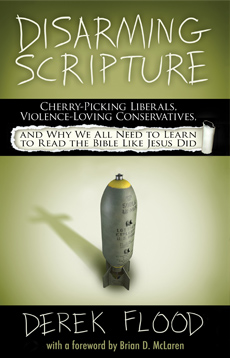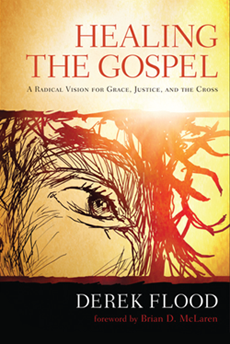How to Read the Bible like Jesus and Paul (Your Seminary Prof Wont Like It)
Monday, May 29, 2017
In
seminary one learns to interpret Scripture in order to best arrive at
the authorial intent. This is known as exegesis. So we look at all the
evidence, including cultural background, understanding the original
languages, and so on, to arrive at what Isaiah or Moses or Paul meant.
We are taught to avoid what is called "eisegesis" which is where you
read your own values and agendas into the text.
As
Richard Hays and many other scholars have noted however, this is not
what Paul or Jesus are doing when they interpret the Hebrew Scriptures.
This conclusion is frankly inescapable. Both Jesus and Paul frequently
interpret Scripture in ways that so obviously override the clear intent
of the original author that it is impossible to imagine this is
accidental.
The
question then is, what is driving their interpretation? How would we
evaluate whether it is a "good" or "right" interpretation if they are
not trying to follow authorial intent? If we wanted to read the same way
they do, how would we similarly evaluate whether we are arriving at a
good or right interpretation?
This is the kind of question that gets scholars like Richard Longenecker confused. He recognizes that Paul is doing this, but suggests that we cannot do it ourselves. In part, his argument is that Paul has a sort of apostolic "free pass" to do whatever he wants when he reads the Bible, but we do not. A second part is that Longenecker sees that this type of reading was regarded as compelling at the time, but he claims it would not be compelling to people in our time.
This is the kind of question that gets scholars like Richard Longenecker confused. He recognizes that Paul is doing this, but suggests that we cannot do it ourselves. In part, his argument is that Paul has a sort of apostolic "free pass" to do whatever he wants when he reads the Bible, but we do not. A second part is that Longenecker sees that this type of reading was regarded as compelling at the time, but he claims it would not be compelling to people in our time.
I'd
like to propose that the problem is that scholars like Longenecker
don't really get what Jesus and Paul are doing, and so the interpretive
methods of Jesus and Paul just seem -- to use the term famously employed
by E.P. Sanders -- "weird." It appears to be a sort of random
just-make-it-up-as-you-go-along kind of approach. Understandably, he
does not want us to read like that. Nor do I. But again I think the
problem is not that what Jesus and Paul are doing is actually random,
but that it looks that way to Longenecker.
Richard Hays argues against Longenecker
that we should adopt this "creative" reading of Paul and Jesus. The
problem is that Hays does not really ever identify what they are doing,
other than that it is "imaginative" and "creative," which sounds great,
but does not provide us with the means to follow them in this. Even if
we are thinking of this as a form of art (as the terms "imaginative" and "creative" imply), as any practicing artist can tell you, art is not random. You need to understand what you are trying to accomplish, and how you will use your medium to achieve that.
To
get to this, I find the work of James Dunn helpful. Dunn identifies the
baseline interpretive approach (i.e. the hermeneutic) of Jesus as
interpreting so as to lead us deeper into love. I think it can be argued
that this telos (aim) of love is equally the baseline hermeneutic of
Paul as well.
So
how does this love-telos work into Jesus and Paul's approach to
interpreting Scripture? What we can observe is that they both read
Scripture so that the result will be that the way it is interpreted
leads us into more compassion, more goodness, more reflection, more
mercy. At times this leads them to take an idea in a new direction, and
at other times this leads them to take it in the opposite direction of
the original author. Sometimes it even seems that they take it in a
direction that appears to completely ignore what the original author had
in mind.
To
the question of "Is this what was originally intended when this was
written?" their answer would be "Who cares?" (that is, this was not
something they were focused on at all, contrary to those doing exegesis
today, hence their indignant confusion at the question). Instead, they
are asking "If we did this, would it result in abundant life? Would
doing this lead to goodness and restoration? Will this lead to
compassion and justice and wholeness in my life and the lives of
others?" If the answer to these questions is "Yes!" then that is what
makes the interpretation right. Here right interpretation and right-eousness
become synonymous. It is however not exegesis. It requires, as Hays
says, creativity and imagination because we need to know how to
understand and build upon something, taking it higher. For that we need
to know what the aim is (the aim is love) and we need to know how to
take things a step further in that direction.
This is something that
needs to be evaluated in conversation, and in lived community. I say
here "lived community" because it is not simply theoretical, but
practical. The question is, "when we walk this out, can we observe that
this leads to love and flourishing? Or does this in fact lead to harm?"
We can only observe that by living it out in relationship, not simply as
an abstract theory. That goes for how we interpret the words of Jesus
and Paul, and it goes for how we evaluate their reading of Scripture as
well.
For example, when Jesus asks, "Is it lawful to heal on the Sabbath?" and then a bit more broadly asks "Is
it lawful to do good on the Sabbath, or evil, to save a life or destroy
it?” (Mk 3:4) we can see Jesus applying this approach. The question is
not so much "What does the command say?" nor is it "What is the
tradition of interpretation here?" In this case the answer would have
been that unless this was a life-threatening situation (which it was
not) one must wait until after the Sabbath to heal. Jesus argued instead that the way we honor this command is to
do all the good we can. That is the right interpretation because it
leads us to right-eousness which is another way of saying towards
good-ness. You might say the way Jesus and Paul read Scripture is to ask "Does this way of interpreting lead to doing
good or evil, does it save life or destroy it?"
So with this example of how Jesus used this love-telos approach to interpret Scripture in mind, let's see how we might apply that love-telos approach with how we interpret the teachings of Jesus. I frequently hear people make the argument that since Jesus
got mad and used a
whip once, therefore we can just ignore all that stuff about nonviolence
and love of enemies he taught. If we evaluate this approach using the criteria of the love-telos approach, we would need to ask: does reading in this way serve to challenge me to go deeper into the way of Jesus, or does it simply serve to let me find a way to side-step the hard teachings of Jesus and feel justified in doing so? I'd say that the latter is the case and that this is an example of what Bonhoeffer might have called "cheap discipleship." It's a reading that gets us off cheap, that does not challenge us, does not change us, does not move us towards love.
To ask the question slightly differently, we might ask
whether there is a better way to read Jesus besides this "cheap" way? Is there a way to interpret the words of Jesus that will lead me to a more costly following of Jesus and his way? Is there a way to read this that would do a better job at challenging me to move
deeper into the way of compassion and forgiveness, and moving me
closer to justice and making things right in the world? If so, then that is the right interpretation, or perhaps I should say, it is the righter
interpretation. We evaluate the rightness of an interpretation on the fruit it bears. That is not a static process where we find, once and for all, the one right way of reading. Rather it is something that needs to grow and develop, just like a living thing does. So if in practice I find that I need to modulate that
righter interpretation a bit in order to make it more loving, then we arrive at an even
righter-er interpretation -- each time developing it
further, expanding and growing towards love. That's what I see Jesus and
Paul doing as they interpret and apply Scripture, and that's how I plan to read them, too. Jesus says, "Very truly I tell you, whoever believes in me will do the works I have been doing, and they will do even greater things than these." That work, my friends, is the work of love. So let's get to work.
Labels: Bible, hermeneutics






